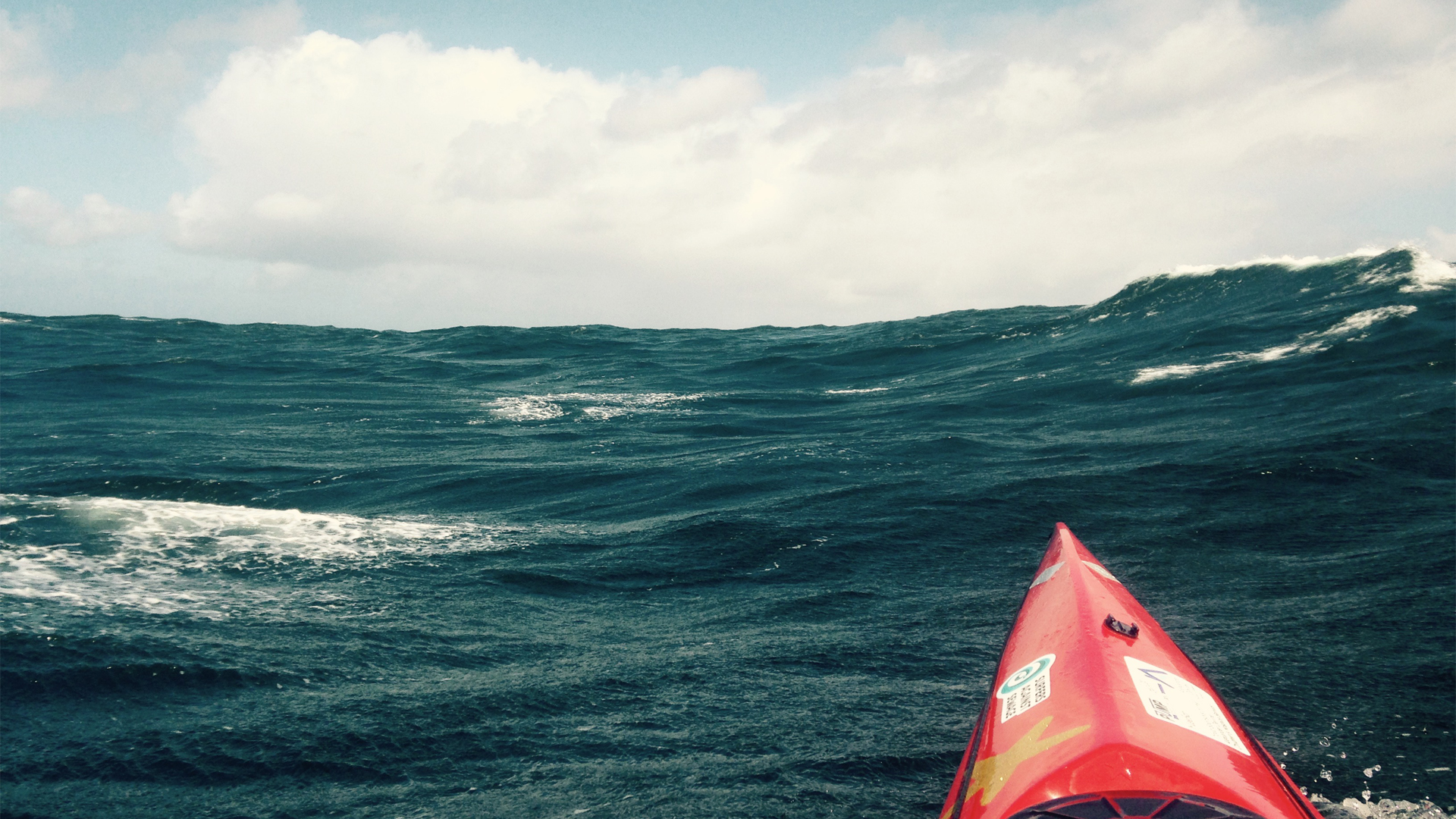By Joe Leach
–
Prior to my 2015 solo Ireland circumnavigation I took some time to reflect on how best to train for expedition kayaking. What we sea paddlers do on expedition requires honing a peculiar set of skills and yet, like the coastline itself, our journeys are shaped by environmental factors beyond our control.
Partly through circumstance and partly through a purist love of fast paddling, I have done much of my winter training in a flatwater racing kayak. The freedom of movement, and outright speed available, feels like the kayaking equivalent of driving a Ferrari. Sessions are quick, involve minimal faff and because I paddle so close to land, I need to carry little in the way of safety kit. Because of the freedom of movement, I achieve a higher cadence, higher work rate, and pack a hard session into a shorter time frame.
The trouble is…no amount of carefully measured and maximal-effort k1 sessions will prepare the sea kayaker for being unable to land in high swell with a gut-full of trouble. Nor will any number of prudently planned gym sessions help you when, after being starved of intellectual stimulation for hours on end, you have some piss-poor melody or absurd thought circling your maddening mind. Fitness is not mental fortitude and neither does it equate with seamanship.
Specificity of practise is bread and butter for anyone versed in the basics of planning a training programme. This is also known as ‘practising real’. For most of us however, ‘practising real’ is not always possible: we might not have access to the ‘real’ venue, the ‘real’ conditions or have time to paddle long days consecutively. Instead of ‘real’, I would advocate training dirty…
Embrace the variables, relinquish comfort and leave the stopwatch at home. Yes, put the safety net of experience, kit, and environmental considerations in place, of course! The best way to do this is to engineer training situations where the risk of failure is high but the consequences are low (think onshore winds, alternative landings and multiple layers of protection from worst case scenarios). Far better to find your limits in practise than to have Neptune show you in anger.
 The best example I can give is a session from last winter with my training partner Katie. We set out on our regular Black Rock Dash time trial which we normally complete in around 40 minutes. We were never going to challenge our PB’s; conditions were heavy onshore wind and swell. Long story short, it took almost two hours at near maximal effort for her. Katie had to bail out at an alternative beach and I was left with the sinking feeling that I had pushed her too far and that we had lost a training session. We both recognise now that it was probably the most productive session of the winter.
The best example I can give is a session from last winter with my training partner Katie. We set out on our regular Black Rock Dash time trial which we normally complete in around 40 minutes. We were never going to challenge our PB’s; conditions were heavy onshore wind and swell. Long story short, it took almost two hours at near maximal effort for her. Katie had to bail out at an alternative beach and I was left with the sinking feeling that I had pushed her too far and that we had lost a training session. We both recognise now that it was probably the most productive session of the winter.
Do practise that re-entry roll midway through your session because you feel like it (also if you don’t feel like it), do train in a broad range of conditions and do push your training partner in once in a while! If they roll they might thank you, if they swim then they ought to thank you. Training dirty is about honing your decision making skills and about opening your eyes and ears to feedback in the moment. I’m not saying that training clean has no place in a programme. Dirty is not sustainable six times a week, but when you’re on expedition, searching for the motivation to get up at 6am, put on cold and wet thermals to paddle into force five headwinds all day, I swear the paddler who trained dirtiest will be the first and last on the water.
Joe Leach – Apr 2016
www.vannav2016.com


